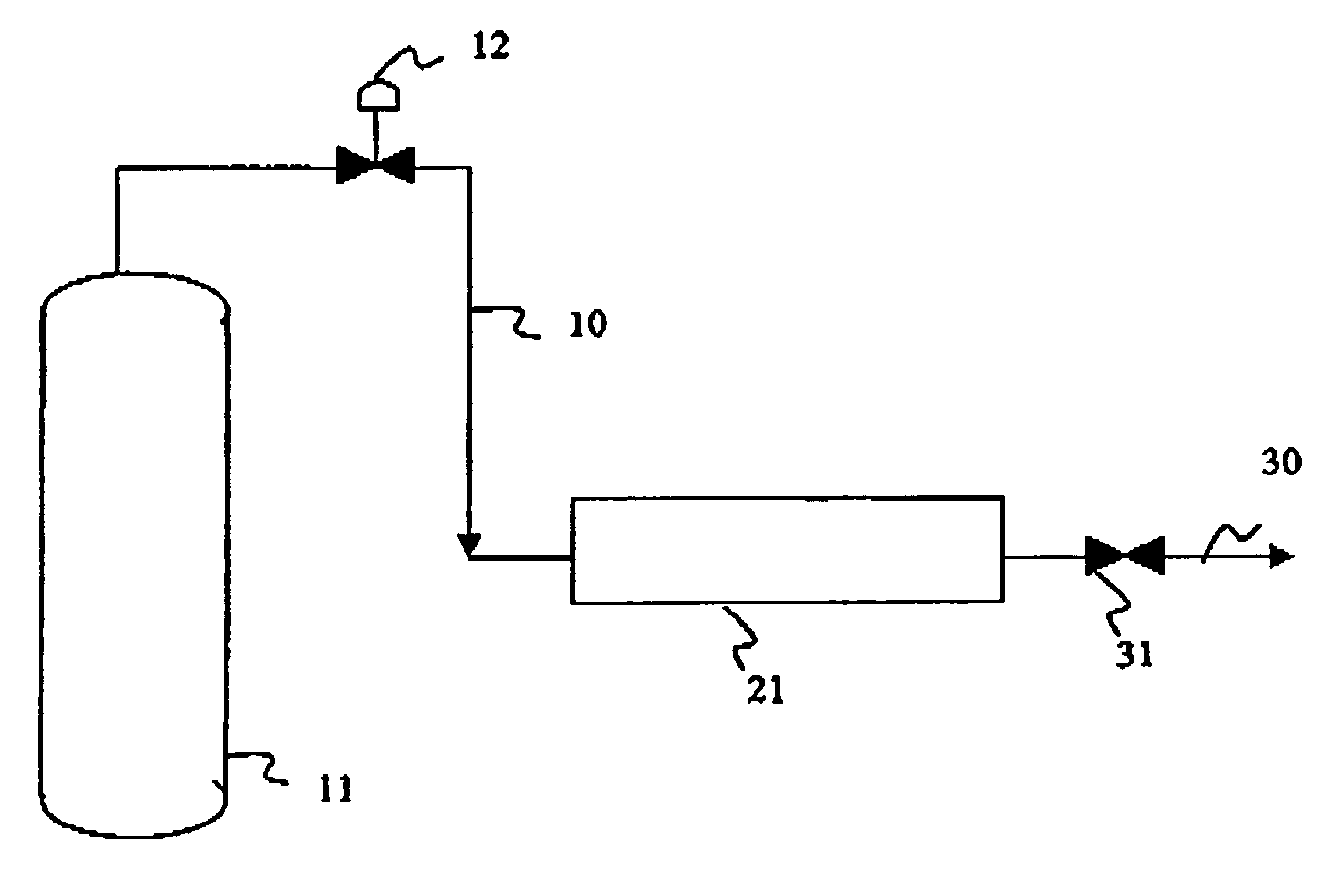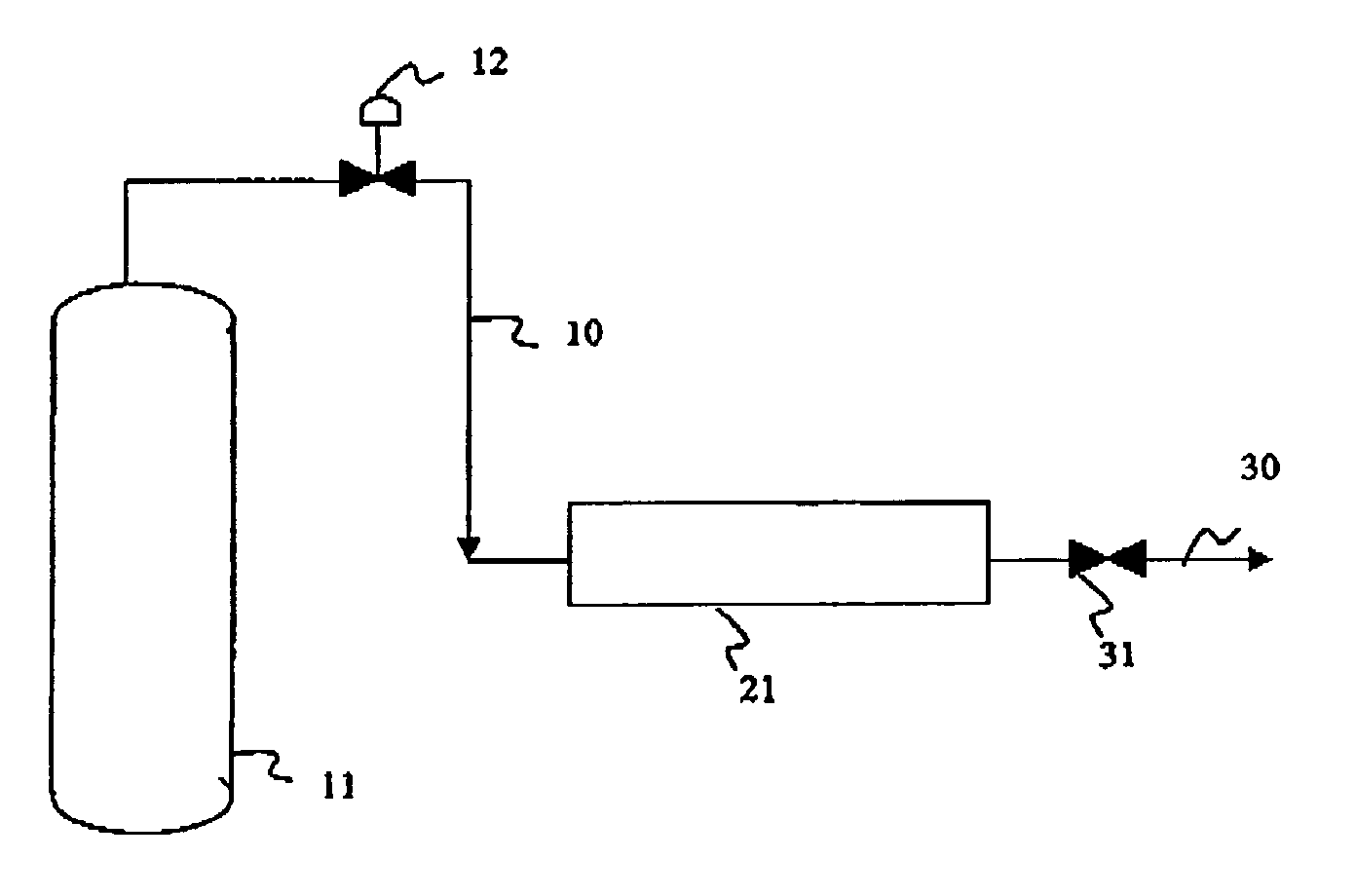Purification of nitrogen trifluoride
a technology of nitrogen trifluoride and purification method, which is applied in the direction of nitrogen purification/separation, dispersed particle separation, separation process, etc., can solve the problems of difficult separation of cfsub>4 /sub>from nfsub>3/sub>, inability to recover nfsub>3 /sub>from conventional bulk adsorption technology, and inability to bulk separation. cfsub>
- Summary
- Abstract
- Description
- Claims
- Application Information
AI Technical Summary
Benefits of technology
Problems solved by technology
Method used
Image
Examples
example 1
[0037]Ten grams of CARBOSPHERE® carbon molecular sieve with a mesh size of 60 / 80 was dried in a 100° C. vacuum oven before use. This material was loaded into a 300 mL stainless steel cylinder and pressurized to about 23 Pisa with a crude product containing NF3 having approximately 1995 ppmv CF4 impurity. After about 2.3 hours, the gas in the cylinder was analyzed by gas chromatography and was found to contain less than 1 ppmv CF4. This example demonstrates that CARBOSPHERE® carbon molecular sieves are much more selective for the adsorption of CF4 than for NF3. This example further demonstrates that CARBOSPHERE® molecular sieves c an be used to effectively reduce CF4 impurities in an NF3 gas composition.
example 2
[0038]The procedure in Example 1 was followed, except that 9.8 grams of CARBOSPHERE® molecular sieve were loaded into the cylinder and a crude product containing NF3 with approximately 2.3 vol. % CF4 was charged into the cylinder at a pressure of about 25 Pisa. After about 2.1 hours, the gas inside the cylinder was analyzed by gas chromatography and was found to contain 0.12 volume percent CF4.
example 3
[0039]Twenty-five grams of CARBOSPHERE® carbon molecular sieve with a mesh size of 60 / 80 was dried in a 100° C. vacuum oven before use. This material was then loaded into a copper tube that measured 12 inches long by ¾ inches in diameter. A crude product of NF3 containing 195 ppmv of CF4 was then flowed through the adsorbent bed at a pressure of 14.7 psi. After 11 minutes the outlet stream was analyzed by gas chromatography and was found to contain less than 1 ppmv CF4.
PUM
| Property | Measurement | Unit |
|---|---|---|
| weight ratio | aaaaa | aaaaa |
| weight ratio | aaaaa | aaaaa |
| volume percent | aaaaa | aaaaa |
Abstract
Description
Claims
Application Information
 Login to View More
Login to View More - R&D
- Intellectual Property
- Life Sciences
- Materials
- Tech Scout
- Unparalleled Data Quality
- Higher Quality Content
- 60% Fewer Hallucinations
Browse by: Latest US Patents, China's latest patents, Technical Efficacy Thesaurus, Application Domain, Technology Topic, Popular Technical Reports.
© 2025 PatSnap. All rights reserved.Legal|Privacy policy|Modern Slavery Act Transparency Statement|Sitemap|About US| Contact US: help@patsnap.com


